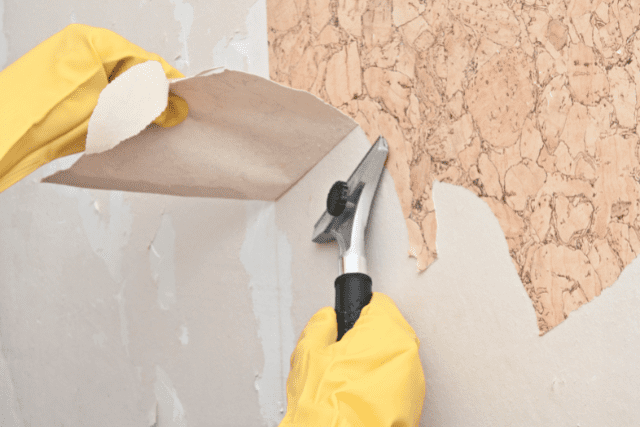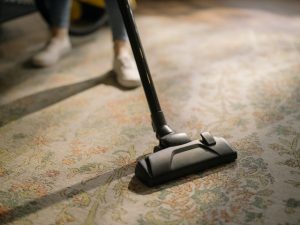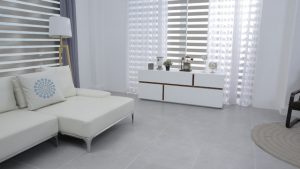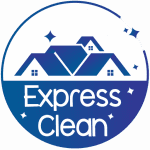How To Remove Your Wallpaper: Best Practices, Materials & Safety
Whether you’re a homeowner freshening up a room or a facility manager updating a commercial space in the Chicago area, knowing how to remove wallpaper safely and efficiently saves time and frustration. This guide breaks down proven methods, chemistry basics, compliance insights, and tips to streamline your project.
Why Proper Wallpaper Removal Matters
Improper removal can damage drywall, create a mess, or leave glue residue that affects future paint or wallcoverings. Following the right steps ensures a smooth, paint-ready surface and minimizes risks like mold growth or workplace incidents.
Pre-Removal Checklist: What You’ll Need
- Wallpaper scorer (for perforating vinyl or coated papers)
- Wallpaper removal solution or homemade mix (hot water + mild detergent or vinegar)
- Drop cloths or plastic sheeting
- Scraper or putty knife (plastic for delicate surfaces)
- Sponge, spray bottle, and gloves
- Bucket, ladder, and PPE (eye protection, mask if using chemicals)
Understanding Materials & Chemistry
Most wallpapers use starch- or cellulose-based adhesives. Hot water helps dissolve these; vinegar or dish soap lowers surface tension, enhancing penetration. Commercial removers may be more alkaline (pH 10–12), requiring gloves and eye protection. Test a small section to ensure compatibility and minimize wall damage.
Step-By-Step: Removing Wallpaper Safely
- Prepare Your Space: Disconnect power to outlets, cover floors and furniture, and wear PPE.
- Score and Wet the Wallpaper: Use the scorer on non-porous wallpaper. Saturate with removal solution and wait 10–20 minutes for dwell time.
- Gently Scrape: Starting from a seam, use the putty knife to lift and remove strips. Don’t force—add more solution if needed.
- Remove Residue: Sponge down the wall with warm water. For persistent adhesive, repeat application or use a gentle scrub brush.
- Dry and Inspect: Allow surfaces to dry completely. Inspect for damage or leftover glue before priming or painting.
Table: Comparison of Wallpaper Removal Methods
| Method | Best For | Time Required | Material Safety |
|---|---|---|---|
| Peel-Away (Strippable) | Recent installs, vinyls | Fast (< 1 hour/room) | No chemicals; low PPE |
| Soak & Scrape | Paper-based, old glue | 2–4 hours/room | Use gloves, ventilation for vinegar/soap |
| Chemical Removers | Stubborn adhesives | 2–5 hours/room | PPE required; check pH |
| Steam Removal | Multiple layers | 2–6 hours/room | PPE for burns, slip risks |
Safety & Compliance for Facilities
Worksite safety is crucial—especially in Chicago-area offices, apartment complexes, and classrooms. Follow these best practices:
- PPE: Use gloves and goggles; consider respirators for chemical removers.
- Ventilation: Open windows and use fans. OSHA recommends adequate airflow when working with chemicals.
- Waste Handling: Collect and bag waste adhesive and paper. Check Chicago’s disposal guidelines for large commercial projects.
- Compliance: Maintain SDS (Safety Data Sheets) for all chemicals used; label secondary containers.
Scheduling Efficiently: Tips for Minimal Downtime
- Work in sections to allow staged drying and inspection.
- Plan removal after-hours in high-traffic or commercial spaces to reduce disruption.
- Enlist extra hands for large walls or multiple rooms.
- Minimize water use near electrical outlets—safety first!
Troubleshooting Common Problems
Some adhesives or wall finishes resist standard removal. Mold may develop if moisture lingers. Remove all traces of adhesive before painting or applying new coverings—leftover glue can bleed through and ruin the finish.
Next Steps After Wallpaper Removal
Clean walls thoroughly and let them dry 24–48 hours. Check out our guide to cleaning your furniture and tips for removing wall stains for a full post-removal refresh.
Related Resources
- Learn how baking soda helps with cleaning stubborn stains
- Get the most out of your spring cleaning with this spring cleaning guide
- Prepare your new home or office with the new space cleaning checklist
Frequently Asked Questions
- Should I use a steamer for all wallpaper? Steaming is best for multiple layers or heavy-duty jobs but not necessary for strippable papers.
- Is vinegar safe on painted drywall? Dilute 1:1 with water and spot-test to prevent damage.
- How can I reduce mess? Work top-down and clean as you go; keep drop cloths in place until finished.
For assistance after removal, consider our full-service options. Schedule house cleaning with our Chicago team, or book move-out cleaning when changing tenants to ensure a seamless transition.
With over 20 years of experience in commercial and residential cleaning across Chicago and the suburbs, our experts are dedicated to sharing best practices for safe, compliant, and efficient facility maintenance.

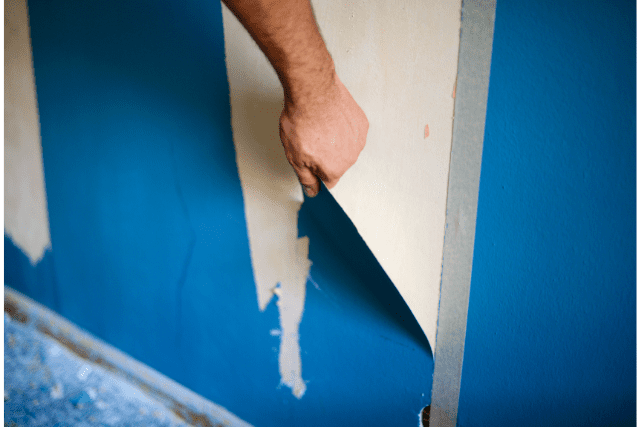
24 Hour Cleaning Service in Chicago, 24 Hour Cleaning Service, Chicago 24 Hour Cleaning Service, Cleaning Services in Chicago Illinois, Same Day Service in Evanston, IL, Same Day Cleaning Service of Addison, Same Day Clean Service in Skokie IL, Cleaning Service in Highland Park, Same Day Cleaning Services in Wicker Park IL

